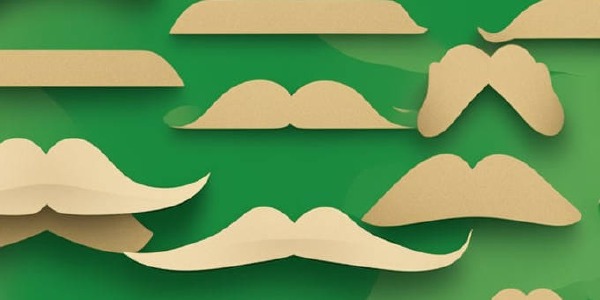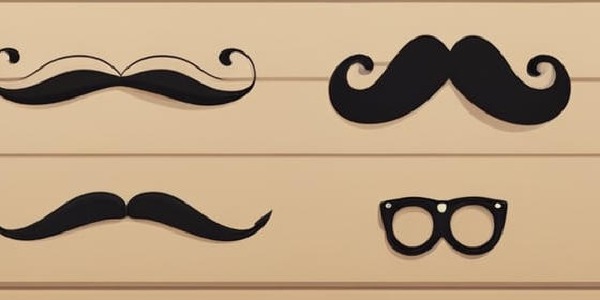The History of the Cardboard Mustache: How It Became a Trend
The cardboard mustache is a quirky and fun accessory that has become a popular trend in recent years. It is often seen at parties, parades, and other festive occasions. But where did this trend come from? How did the cardboard mustache become so popular? In this article, we will explore the history of the cardboard mustache and its rise to fame.

Origins of the Cardboard Mustache The cardboard mustache has its origins in the 19th century, when mustaches were a popular fashion statement among men. However, not everyone was blessed with a thick and luxurious mustache, so people began to create fake mustaches using various materials, including paper and cardboard. These makeshift mustaches were often used in plays and other theatrical productions, where actors needed to look the part of a distinguished gentleman.
Cardboard Mustache in Art and Portraits The cardboard mustache also found its way into art and photography. In the early 20th century, portrait photographers began to offer cardboard mustaches as props to their clients. These mustaches were often used by women, who wanted to look more masculine in their portraits. The cardboard mustache became a symbol of gender-bending and subversion, and it was embraced by artists and intellectuals of the time.
Key Takeaways
- The cardboard mustache has its origins in the 19th century when mustaches were a popular fashion statement among men.
- The cardboard mustache found its way into art and photography in the early 20th century and became a symbol of gender-bending and subversion.
- Today, the cardboard mustache is a popular accessory at parties and festive occasions.
Origins of the Cardboard Mustache
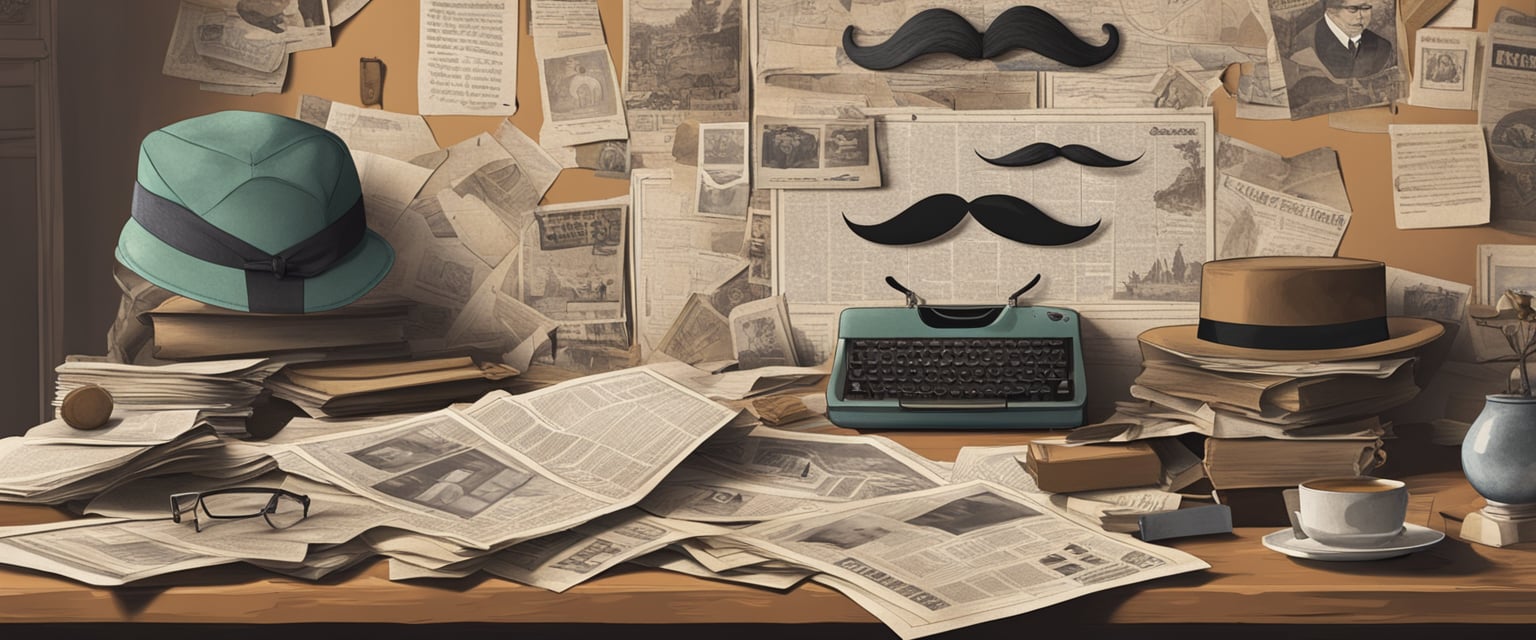
The Cardboard Mustache, also known as the Paper Mustache, is a novelty item that has been around for over a century. It was first introduced in Europe in the late 1800s as a cheap and easy way to mimic the popular mustache styles of the time.
The Cardboard Mustache gained popularity in England during the early 1900s, where it became a common sight at parties and other social events. It was often used as a way to add some humor to formal occasions. The mustaches were typically made from thin cardboard and were held in place by a thin strip of adhesive tape.
The Cardboard Mustache was especially popular with children, who enjoyed wearing them as part of their dress-up games. The mustaches were also used in theatrical productions as a way to create a more convincing appearance for actors playing characters with facial hair.
Over time, the popularity of the Cardboard Mustache spread to other parts of the world, including the United States. Today, it remains a popular novelty item that is often used as a costume accessory or as a way to add some humor to social events.
In conclusion, the Cardboard Mustache has a long and interesting history that dates back over a century. It has been used as a way to mimic popular mustache styles, add humor to formal occasions, and create a more convincing appearance for actors. Despite its humble origins, the Cardboard Mustache remains a popular and enduring novelty item that is enjoyed by people of all ages.
Cardboard Mustache in Art and Portraits

Cardboard mustaches have made their way into the world of art and portraiture, becoming a popular subject for artists and photographers alike. Here are a few examples of how cardboard mustaches have been used in the art world.
Influence of Salvador Dalí and Hercule Poirot
Salvador Dalí, the famous Spanish surrealist painter, was known for his flamboyant personality and his iconic mustache. In fact, his mustache was so famous that he once said, "I believe that my mustache has contributed to my success in life." His mustache became a symbol of his eccentricity and creativity, and it has been immortalized in many of his paintings and photographs.
Another notable figure who popularized the mustache was Hercule Poirot, the fictional detective created by Agatha Christie. Poirot was known for his meticulous attention to detail and his signature mustache, which was described as "immense" and "magnificent." His mustache became a symbol of his intelligence and his ability to solve even the most complex mysteries.
The Mustache in Italian Art
The cardboard mustache has also made its way into Italian art, particularly in the work of the Italian artist Maurizio Cattelan. Cattelan is known for his provocative and often controversial work, and he has used cardboard mustaches in several of his installations. In one piece, titled "The Ballad of Trotsky," he created a life-size sculpture of the Russian revolutionary with a cardboard mustache.
In addition to Cattelan's work, cardboard mustaches have also been used in Italian portraiture. For example, photographer Oliviero Toscani created a series of portraits featuring famous Italian figures wearing cardboard mustaches. The portraits were part of a larger project aimed at exploring Italian identity and culture.
Overall, the cardboard mustache has become a popular subject in the world of art and portraiture, thanks in part to the influence of figures like Salvador Dalí and Hercule Poirot. Whether used as a symbol of creativity and eccentricity or as a way to explore identity and culture, the cardboard mustache continues to captivate artists and audiences alike.
Cardboard Mustache in Military History
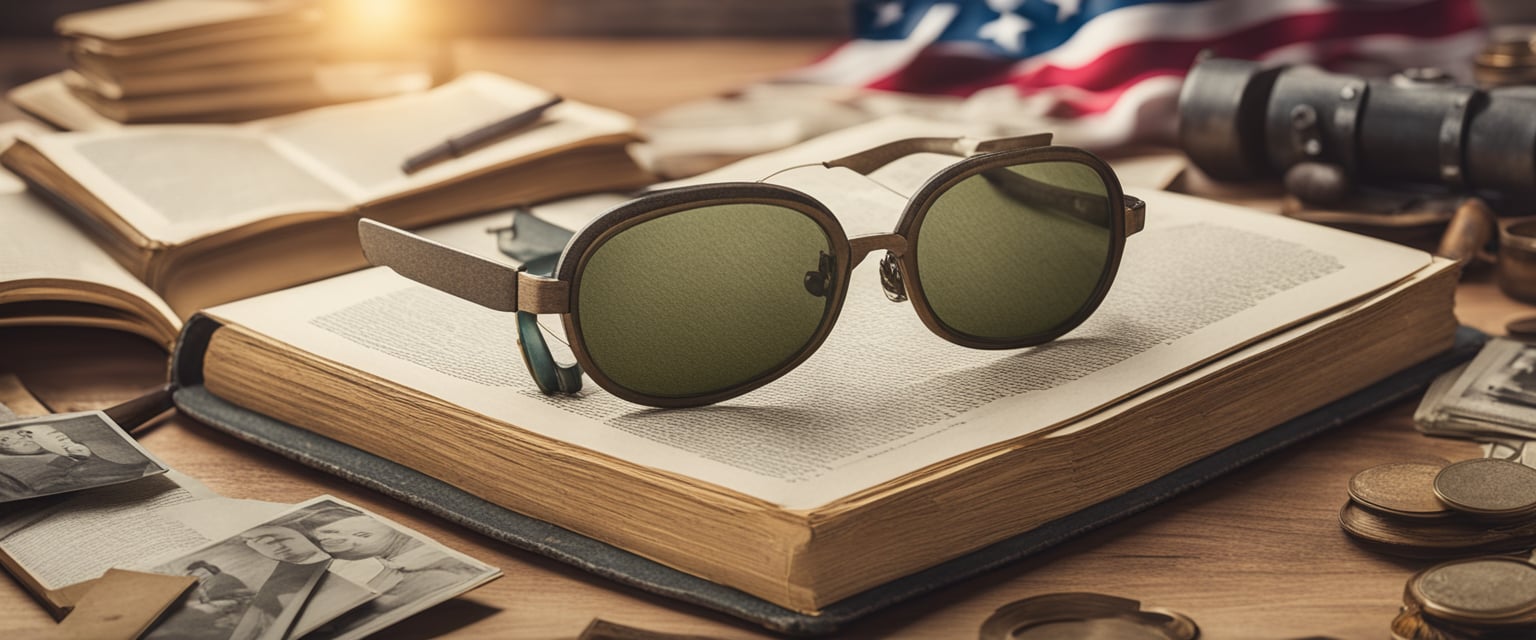
The Crimean War and the British Army
The use of cardboard mustaches in military history can be traced back to the Crimean War in the mid-19th century. During this war, soldiers on both sides would often grow mustaches to keep their faces warm in the cold climate. However, the British Army, in particular, faced a problem with their mustaches. The officers were required to have well-groomed mustaches, but many of the soldiers were unable to grow them to the required standard. This led to the creation of the cardboard mustache, which was worn by soldiers who were unable to grow their own mustache.
According to the Illustrated London News, the cardboard mustache was a "neat and ingenious contrivance" that was "much admired by the soldiers." The mustache was made of cardboard and was attached to the face with a piece of string or ribbon. It was designed to look like a real mustache and was often painted black to match the soldier's hair color.
World War I and the Rise of the Mustache
The use of cardboard mustaches continued into the 20th century, and they became particularly popular during World War I. Mustaches were seen as a symbol of masculinity and were worn by soldiers on both sides of the conflict. However, not all soldiers were able to grow a mustache, and so cardboard mustaches once again became popular.
The British Army once again led the way in the use of cardboard mustaches. According to the Illustrated London News, "the cardboard mustache is once more coming into its own." The mustaches were often included in care packages sent to soldiers on the front line and were seen as a way to boost morale.
In conclusion, the use of cardboard mustaches in military history can be traced back to the Crimean War. The mustache was a practical solution to the problem of soldiers who were unable to grow their own mustache. The use of cardboard mustaches continued into the 20th century and became particularly popular during World War I. They were seen as a way to boost morale and were often included in care packages sent to soldiers on the front line.
Mustache Fashion and Trends

Victorian Era to the Hippie Movement
The mustache has been a popular fashion statement for centuries, with its popularity waxing and waning over the years. During the Victorian era, the mustache was a sign of masculinity and social status, with various styles emerging during different phases of the 19th century. As the 20th century dawned, the mustache fell out of fashion, only to make a comeback in the 1960s with the rise of the hippie movement. The mustache became a symbol of rebellion and counterculture, with many young men growing out their facial hair as a statement against the establishment.
The Mustache in Sports and Entertainment
The mustache made a big splash in sports and entertainment in the 1970s with iconic figures like Tom Selleck, Burt Reynolds, and Hulk Hogan sporting their signature facial hair. Tom Selleck's thick, well-groomed mustache became a defining feature of his character on Magnum, P.I., while Burt Reynolds' mustache was a staple of his tough-guy persona in films like Smokey and the Bandit. Hulk Hogan's handlebar mustache became synonymous with his larger-than-life wrestling persona.
In the world of music, Frank Zappa's distinctive mustache was as much a part of his image as his avant-garde music. Zappa's thin, pointed mustache was a perfect complement to his unconventional style and experimental approach to music.
The cardboard mustache emerged as a trend in the early 21st century, with people sporting the fake mustaches as a fun and playful accessory. The mustache has continued to be a popular fashion statement, with many people embracing the trend and incorporating it into their personal style.
The Cardboard Mustache and Masculinity
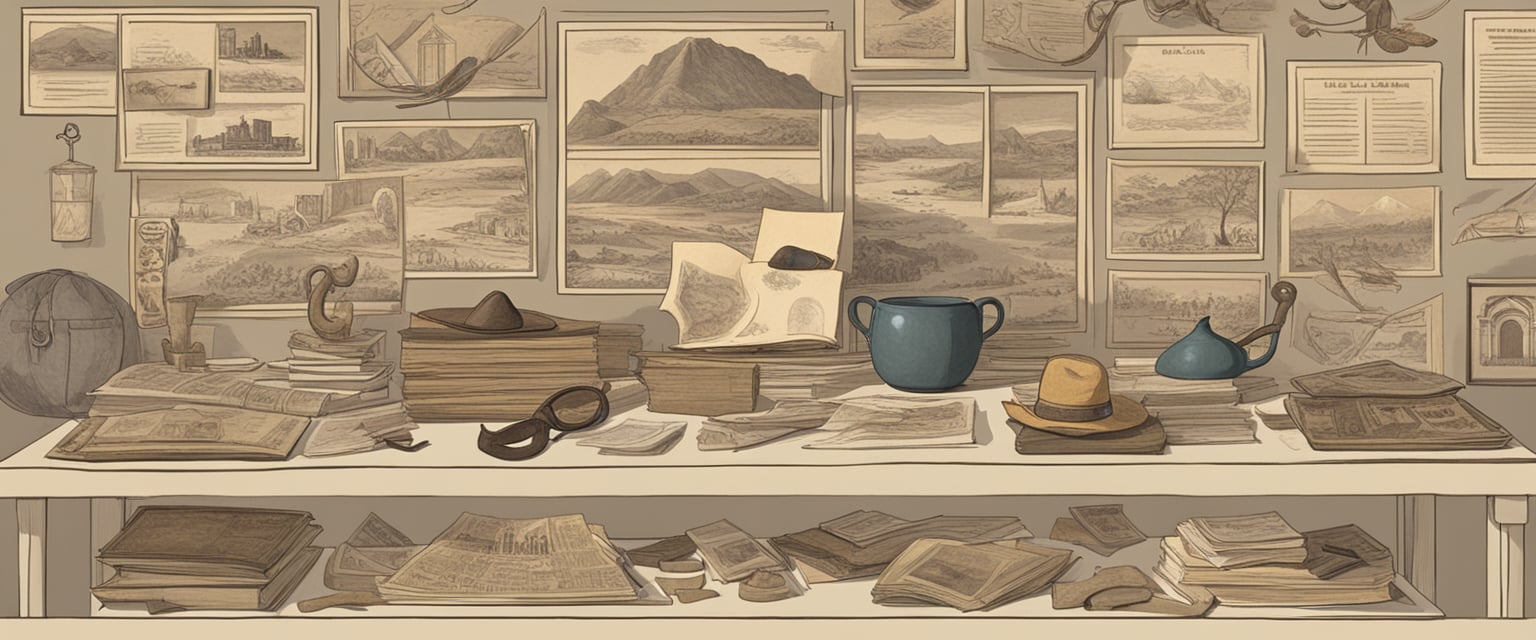
The cardboard mustache has a long and storied history in the world of facial hair. For many men, the mustache has been a symbol of masculinity, power, and authority. In this section, we will explore the influence of beards and sideburns on the popularity of the cardboard mustache, as well as the power that the mustache has held over the years.
Influence of Beards and Sideburns
Beards and sideburns have long been associated with masculinity and power. In the 19th century, for example, the beard was seen as a symbol of manliness, and many men grew beards to show off their virility and strength. Sideburns, too, were a popular facial hair style, and were often worn by military men and other figures of authority.
As the popularity of beards and sideburns waned in the 20th century, however, the mustache began to emerge as a new symbol of masculinity. The mustache was seen as a more refined and sophisticated facial hair style, and was often worn by businessmen, politicians, and other powerful men.
The Power of the Mustache
The mustache has held a great deal of power over the years, and has been associated with many different attributes of masculinity. For example, a thick, bushy mustache was seen as a sign of strength and virility, while a thin, well-groomed mustache was seen as a sign of refinement and sophistication.
In addition to its associations with masculinity, the mustache has also been used as a symbol of rebellion and counterculture. In the 1960s and 1970s, for example, many young men grew mustaches as a way of rejecting the conservative values of their parents' generation.
Today, the cardboard mustache continues to be a popular fashion accessory, and is often worn as a symbol of irony or humor. Despite its lighthearted nature, however, the cardboard mustache remains a powerful symbol of masculinity and power, and continues to be worn by men of all ages and backgrounds.
The Cardboard Mustache Today

As the trend of mustaches continues to grow, so does the popularity of the cardboard mustache. This unique and quirky accessory has become a staple for both men and women alike. Here are a few ways in which the cardboard mustache is making its mark in today's society.
Movember and Mustache Awareness
Movember, a global charity that raises awareness for men's health issues, has played a significant role in the rise of mustache culture. During the month of November, men grow mustaches to show their support for the cause. The cardboard mustache has become a popular accessory for those who cannot grow a mustache or want to show their support in a more lighthearted way. The charity has even partnered with companies that sell cardboard mustaches to raise funds for their cause.
The American Mustache Institute
The American Mustache Institute (AMI) is a nonprofit organization dedicated to promoting the growth, care, and culture of the mustache. Aaron Perlut, the chairman of the AMI, has been a vocal advocate for the cardboard mustache. In an interview with NPR, Perlut stated that the cardboard mustache is a way for people to "participate in the mustache culture without actually growing a mustache." The AMI has even created a "Cardboard Mustache Caucus" to recognize those who wear the accessory.
The cardboard mustache has become a fun and playful way for people to show their support for mustache culture and men's health issues. Whether it's for a charity event or just for fun, the cardboard mustache has become a staple in today's society.
Conclusion
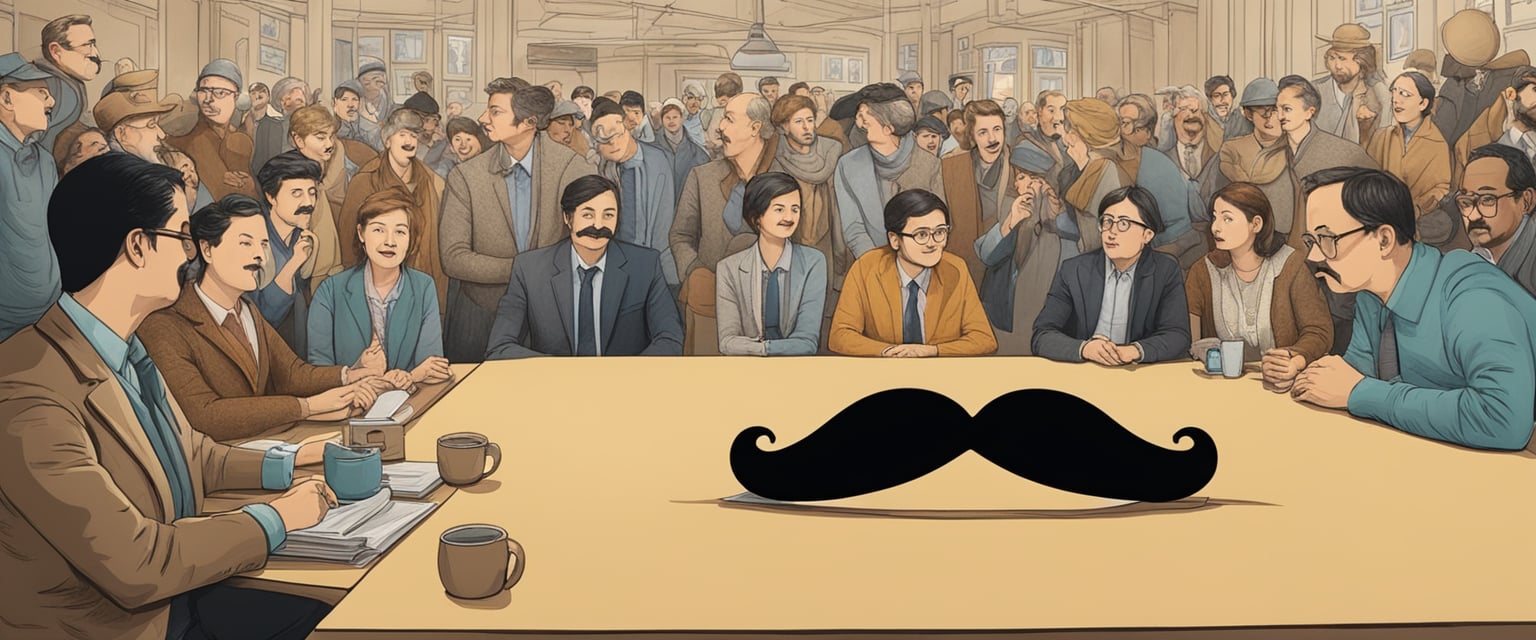
The cardboard mustache has a rich history that dates back to the 19th century. It was a symbol of masculinity and style, representing qualities such as strength, authority, and personal expression, leaving a lasting legacy that still resonates in modern times. The trend of wearing cardboard mustaches was popularized by the entertainment industry, particularly in the United States, where it became a staple at parties, events, and social gatherings.
The popularity of the cardboard mustache waned over time, but it has seen a resurgence in recent years. This can be attributed to the rise of social media and the internet, which has made it easier for people to share their experiences and connect with others who share their interests. The cardboard mustache has become a symbol of fun, creativity, and nostalgia, and it is commonly used in photo booths, parties, and other events.
As people retire and enter their golden years, they may find themselves looking back on the trends and fads of their youth. The cardboard mustache is one such trend that has stood the test of time and continues to be popular among people of all ages. Whether it's for a costume party or just for fun, the cardboard mustache is a timeless accessory that will always bring a smile to people's faces.
Frequently Asked Questions

What is the origin of the cardboard mustache?
The cardboard mustache originated in the early 20th century as a cheap and easy alternative to real mustaches. It was created as a novelty item that could be worn for fun or as a costume accessory.
What inspired the trend of cardboard mustaches?
The trend of cardboard mustaches was inspired by the popularity of real mustaches in the early 20th century. The cardboard mustache provided a way for people who could not grow a real mustache to participate in the trend.
How did the cardboard mustache become popular?
The cardboard mustache became popular through its use in advertising and as a novelty item. Companies would often include cardboard mustaches in their products as a promotional item, and people would wear them as a fun accessory.
What are some notable figures who have sported the cardboard mustache?
There are no notable figures who have sported the cardboard mustache, as it is a novelty item rather than a real mustache.
What is the significance of the cardboard mustache in popular culture?
The cardboard mustache has become a symbol of fun and whimsy in popular culture. It is often used as a prop in photo booths and as a costume accessory for parties and events.
What are some variations of the cardboard mustache?
There are many variations of the cardboard mustache, including different shapes, sizes, and colors. Some cardboard mustaches even come with attached glasses or other accessories.



